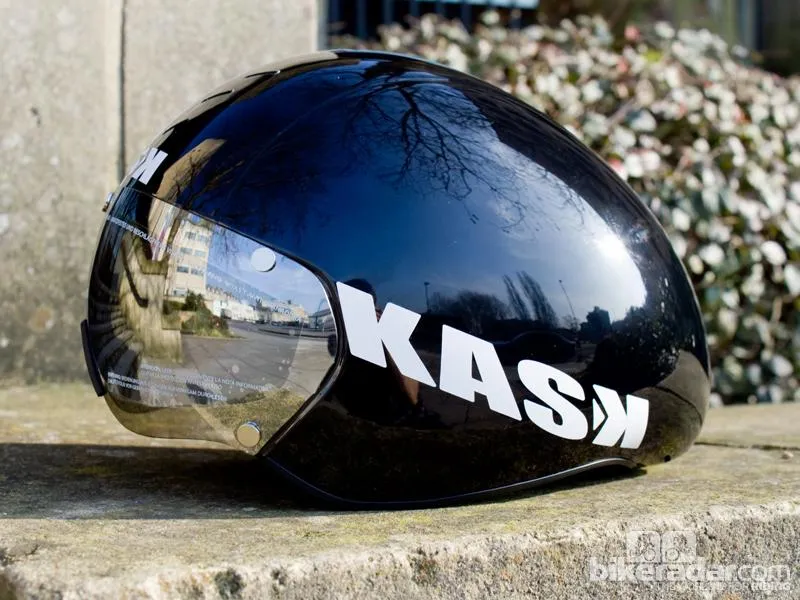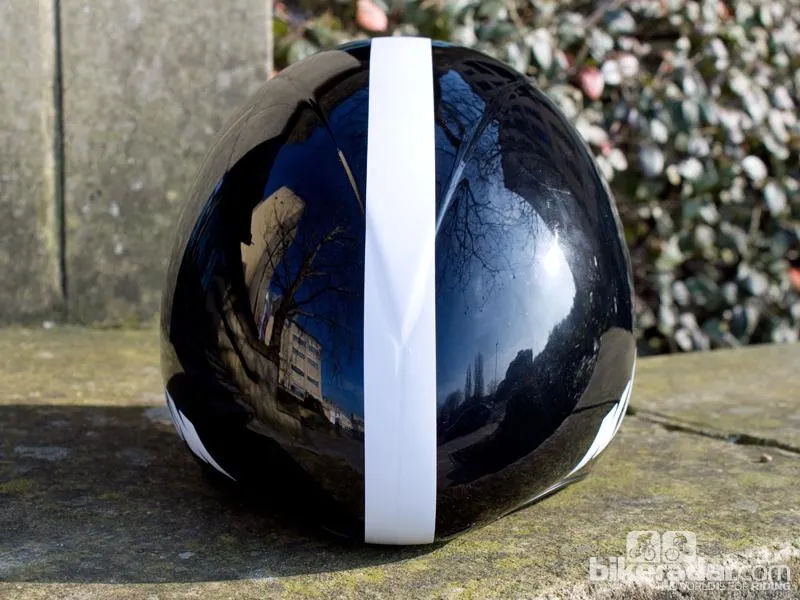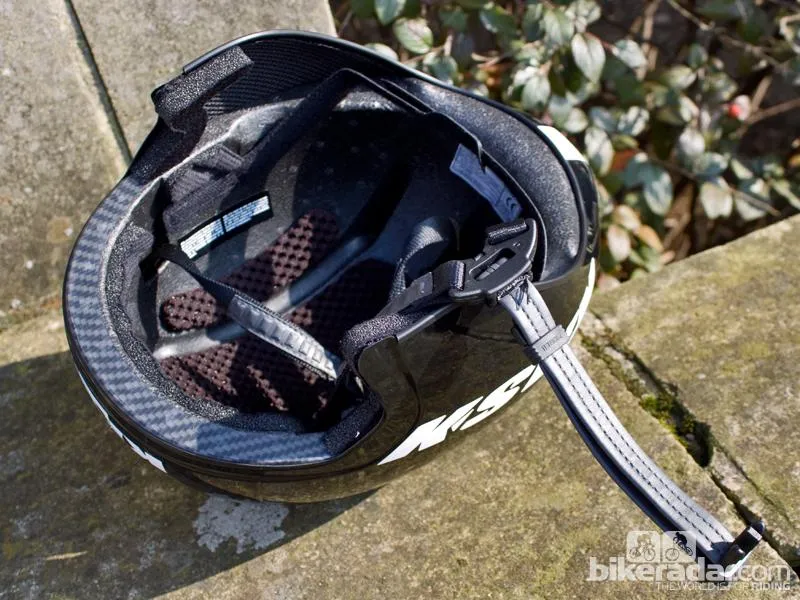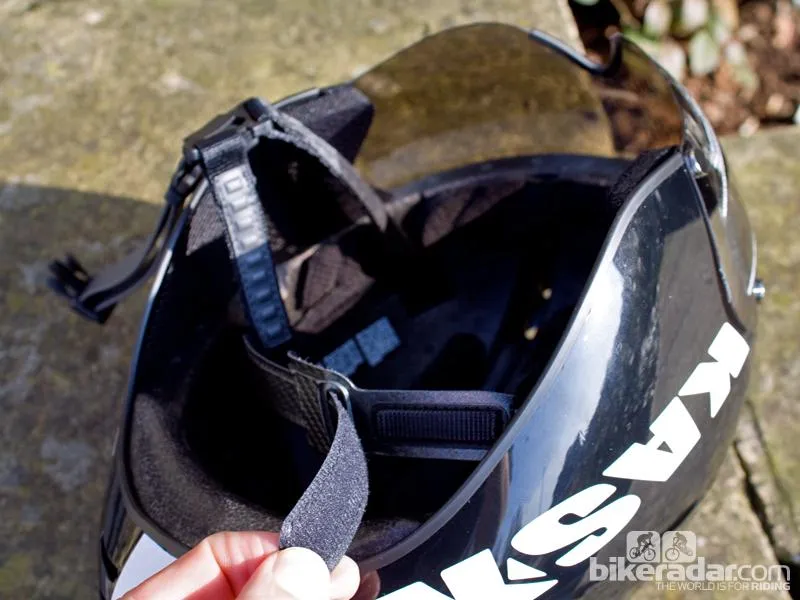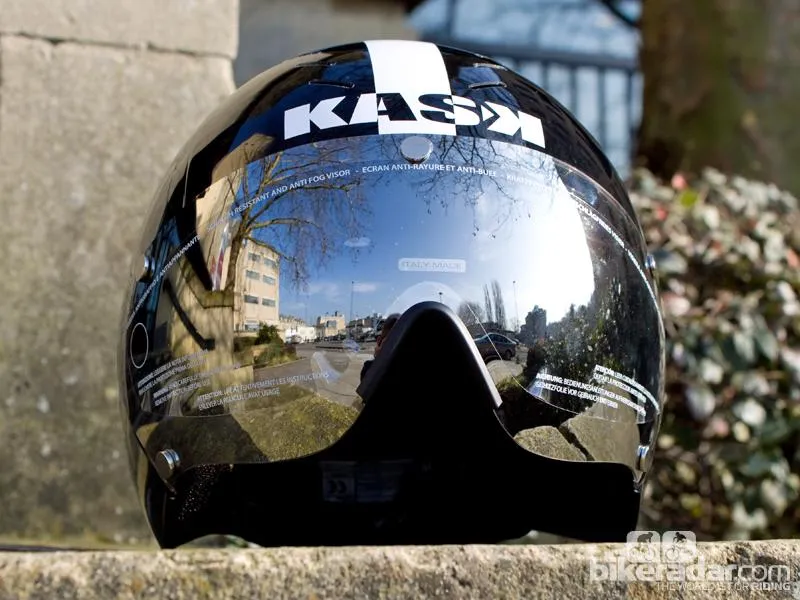The Kask Bambino time trial helmet represents a new-old direction in aero lid technology.
It's a stubby tailed helmet based on a UK Sport design that's been used successfully by Team Sky. But if you go back 20 years you'll notice that top time triallists such as Chris Boardman were using short tailed aero helmets to good effect.
In the intervening years, longer tailed helmets have become more fashionable. But via his involvement with UK Sport, Boardman has clearly had an influence on this particular design.
The logic behind it is that it can cope with all manner of wind directions without a significant aero penalty in any particular direction. So while it might not be as quick as a teardrop helmet when the wind's coming at you front on, it will be better in a crosswind. That's the theory, anyway.
In our experience of lid testing, there's no such thing as 'fastest', as it's highly dependent on head position and body shape. Unfortunately, finding out what works best is time consuming and expensive, depending on whether you want to use field or wind tunnel testing.
With this considerable caveat, we can say that the Bambino is a very nice helmet in many ways. It's one of the most comfortable we've ever tried, fitting snugly but not too tightly, and covering most of your face, including your ears. The leather chin strap is a classy touch.
It features a magnetically attached visor that stays in place even at high speeds, as long as you don't touch it. If you do, be prepared for some jiggling to get it back into place. Of course, you can ride without the visor, but you won't get all the aero benefits. That didn't seem to slow Bradley Wiggins down too much when he won the first time trial of the 2012 Tour in a visorless Bambino (he started with one but removed it en route).
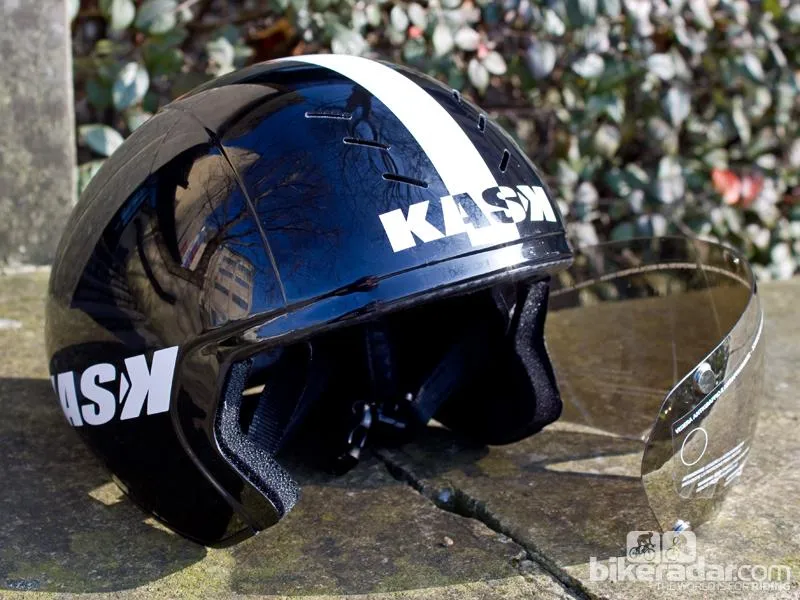
The Bambino visor attaches easily via magnets
Wiggins likely opted out of the visor because there's almost no ventilation inside the helmet, save for six small slits in the front. This means that on a warm day you might find it uncomfortably hot, and will be sweating on the inside of the visor. No big deal in a short time trial, but it's something to consider before a longer one.
The Bambino weighs 380g for a 55-58cm (medium) model, including visor. That's better than average for an aero helmet – you can get lighter ones, but many are over 400g.
How much for this piece of go-faster technology? It costs £299 in the UK, and $499 in the US. Currently, it's only available in black or white.
